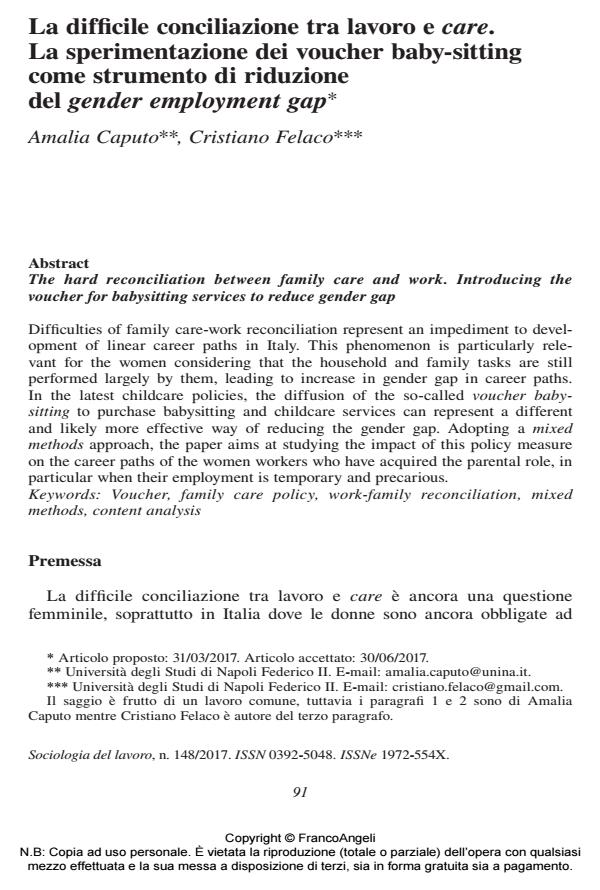The hard reconciliation between family care and work. Introducing the voucher for babysitting services to reduce gender gap
Journal title SOCIOLOGIA DEL LAVORO
Author/s Amalia Caputo, Cristiano Felaco
Publishing Year 2017 Issue 2017/148
Language Italian Pages 22 P. 91-112 File size 228 KB
DOI 10.3280/SL2017-148006
DOI is like a bar code for intellectual property: to have more infomation
click here
Below, you can see the article first page
If you want to buy this article in PDF format, you can do it, following the instructions to buy download credits

FrancoAngeli is member of Publishers International Linking Association, Inc (PILA), a not-for-profit association which run the CrossRef service enabling links to and from online scholarly content.
Difficulties of family care-work reconciliation represent an impediment to development of linear career paths in Italy. This phenomenon is particularly relevant for the women considering that the household and family tasks are still performed largely by them, leading to increase in gender gap in career paths. In the latest childcare policies, the diffusion of the so-called voucher babysitting to purchase babysitting and childcare services can represent a different and likely more effective way of reducing the gender gap. Adopting a mixed methods approach, the paper aims at studying the impact of this policy measure on the career paths of the women workers who have acquired the parental role, in particular when their employment is temporary and precarious.
Keywords: Voucher, family care policy, work-family reconciliation, mixed methods, content analysis
Amalia Caputo, Cristiano Felaco, La difficile conciliazione tra lavoro e care. La sperimentazione dei voucher baby-sitting come strumento di riduzione del gender employment gap in "SOCIOLOGIA DEL LAVORO " 148/2017, pp 91-112, DOI: 10.3280/SL2017-148006